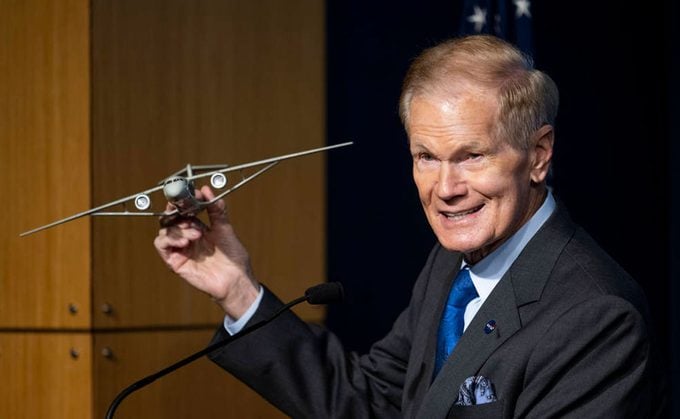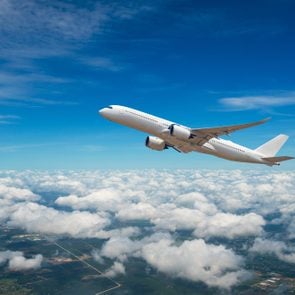You Might Start Seeing This Brand New Airplane in the Near Future
Updated: Apr. 30, 2023

Say hello to greener commercial flying with this NASA and Boeing collaboration.
We all know about eco-friendly cars, but not many of us have heard of any mainstream, eco-friendly airplanes. Well, that’s about to change.
NASA and Boeing are officially working on a new innovation to ease our climate anxiety and pioneer some new, modern travel possibilities. Not in where we travel but how we travel there. We’re talking about reimagining airplanes as we know them—specifically, one iconic feature of the airplane: airplane wings.
That’s right, NASA and Boeing are planning to create a single-aisle aircraft that debut new, more sustainable, airplane wings. Here’s everything we know so far about the new development.
What does the NASA and Boeing collaboration entail?
The government agency announced that they will collaborate with Boeing on the Sustainable Flight Demonstrator Project to create, test out and launch planes with environmentally-friendly technology. Which, in an age of climate change and global warming, is music to our ears.
Eventually, the goal is to produce a two-engine aircraft that will introduce “green single-aisle airliners,” according to a NASA press release, into the mix. We’ll be adding this recent innovation to our list of how to be a more sustainable traveler.
To make these planes of the future possible, NASA will invest $425 million over a seven-year period into the project. Boeing and its partners will invest the remaining $725 million.
“It’s our goal that NASA’s partnership with Boeing to produce and test a full-scale demonstrator will help lead to future commercial airliners that are more fuel efficient, with benefits to the environment, the commercial aviation industry, and to passengers worldwide,” Bill Nelson, a NASA administrator, commented.
What might the new wings look like?

The new wings won’t look exactly like what we’re used to seeing when traveling. In fact, they’ll look vastly different than the traditional wing we’re used to.
Picture these eco-friendly wings as long and skinny, protruding from the top of the aircraft. Additionally, the wings are expected to be significantly longer than the ones of the present, with two engines underneath, that will receive support from trusses. Fittingly, the wings are called Transonic Truss-Braced Wings.
How will the wings be more sustainable?
In terms of their effect, the wings can reduce emissions by up to 30% in contrast present-day aircraft.
“We’re honored to continue our partnership with NASA and to demonstrate technology that significantly improves aerodynamic efficiency resulting in substantially lower fuel burn and emissions,” Boeing’s chief technology officer, Todd Citron stated.
When will we potentially see the new wings?
The two organizations hope to get the new aircraft in action by 2028, with further hopes to have multiple planes in service by the 2030s. The move is a major step forward in achieving net-zero carbon emissions by 2050—an environmental goal the White House has previously stated it hopes to reach.
“Since the beginning, NASA has been with you when you fly. NASA has dared to go farther, faster, higher. And in doing so, NASA has made aviation more sustainable and dependable. It is in our DNA,” Nelson said.
Sources
- NASA: “NASA Issues Award for Greener, More Fuel-Efficient Airliner of Future”
















